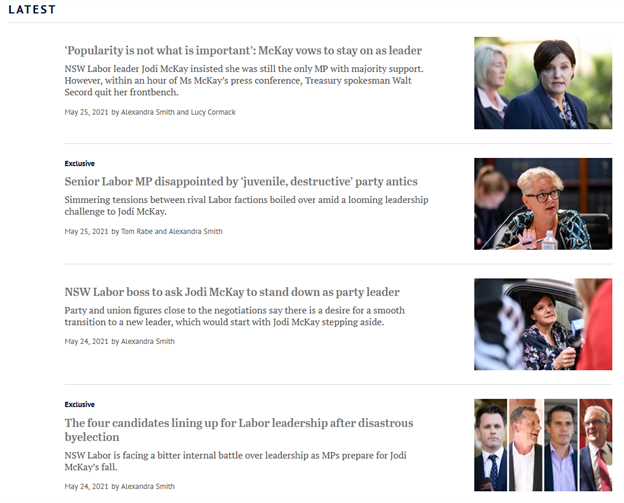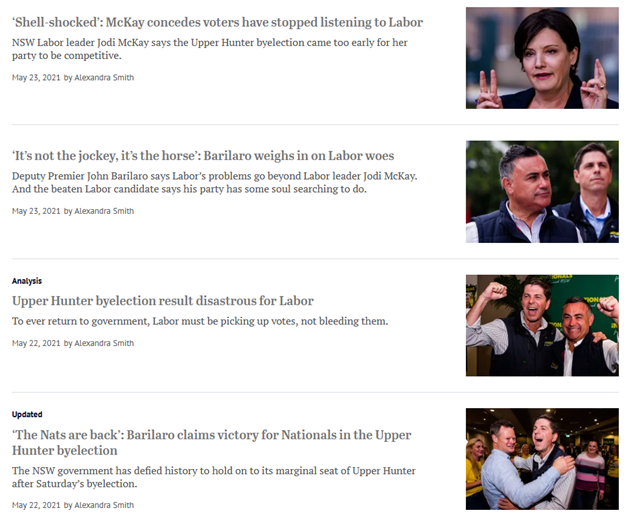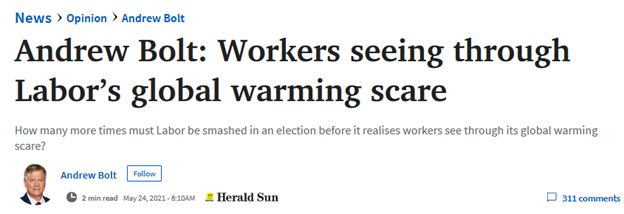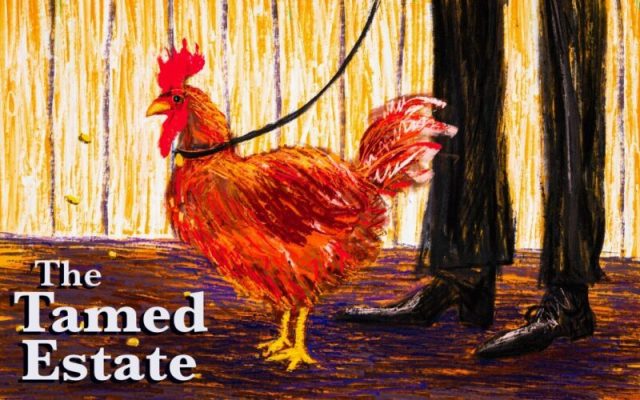Labor had not held the seat for more than a century but it was still portrayed as a cataclysmic defeat for the party. Michael Tanner casts a critical eye over the media coverage of the Hunter byelection where the drop in Labor’s vote featured despite the long-term halving of the Nationals’ vote.
The headlines could so easily have been “Voters desert major parties”. After all, the Nationals and the Australian Labor Party, combined, garnered only a sliver over 50% of the primary vote.
The headlines might also have said “Nationals foothold in the Hunter region tumbles further”; after all, they received a first preference vote of just 31%. This compares to 70% of the primary vote in 1995, 60% in 2007, and 55% in 2011. The 31% of the electorate that preferenced Nationals first – a further 2.7% decline since the last election – was “anaemic”, according to the right-leaning Spectator magazine.
The narrative could even have been that “$600m gas-plant pork-barrelling gets National party over the line” – after all, funding for the gas plant wasn’t in the budget. And the government’s representative who fronted up to Senate Estimates was wholly unable to identify from where the $600 million for the gas plant was coming.
There was certainly room for critical debate of the challenge the Labor Party faces. A chunk of the 7.3% swing against the ALP likely benefitted either progressive Independent Kirsty O’Connell, who received 8.8% of the vote and questions the future of coal mining.
There could have also been recognition that Gladys Berejiklian remains popular in NSW, despite being mired in scandal; recognition that we are still in a pandemic, which has time and again bestowed on incumbents a bump in the polls; and recognition of the fact that the last time Labor held the Upper Hunter seat was more than 100 years ago, in 1910. An ALP victory should never have been on anyone’s radar.
But the media blew it up as a cataclysmic defeat for the ALP and a resounding victory for the Coalition.
Alexandra Smith, state political editor of the Sydney Morning Herald, set up the election as a must-win for Labor, despite the fact that, for all the above reasons, the ALP had the slimmest of chances to win the byelection.

Then there were 11 articles in five days that bemoaned Labor’s performance and focused on the NSW Labor leadership.



Broadly, of the seven articles discussing the election, all mentioned Labor’s primary vote dropping to 21%. No article mentioned that the Nationals vote had almost halved to 31%, from 60% in 2007.
Byelection facts MIA
Then there are the specifics, which border on misinformation. Smith claims twice, wrongly, that by-elections usually result in a party changing hands.




However, a quick review of by-elections in Australian politics demonstrates this is simply wrong. In federal politics, 15 of the past 16 by-elections have been held by the incumbent party – the exception being Wentworth, won by Kerryn Phelps in 2018.
Specifically in NSW, nine of the past 11 by-elections have been retained by the incumbent party.
The two that changed hands were Wagga Wagga, a by-election that was forced following the revelations of corruption involving the disgraced Liberal MP Daryl Maguire. Independent Joe McGirr won Wagga easily.
Orange changed hands from the Nationals’ Andrew Gee to Philip Donato of the Shooters Fishers and Farmers party.
Similar pattern
The coverage elsewhere fit a similar pattern. It was a rejection of “wokeness” and climate action, a call not to “abandon the miners”, even though the large drop in the primary vote for the ALP largely coincided with the option of an independent who was seeking “sensible” debate about mining in the Hunter.
The loss was “humiliating” and ringing “alarm bells”. While Yoni Bashan at The Australian took the time to mention the “31 per cent” that represented the Nationals’ primary vote, he did not make the next connection, that the Nationals’ vote had halved (from the 60s to the 30s). However he did have space to point out Labor’s fall (from the 30s to the 20s).
The Australian



The Australian Financial Review



The Herald Sun

While the ALP, both in NSW and federally, is having plenty of trouble landing punches, one could also ask whether such alarmist coverage is a symptom or a cause of Labor’s difficulties.
Michael Tanner is completing a Doctor of Medicine/Doctor of Philosophy. His writing explores the intersection of economics, the media and public health. His writing has also been published in The Age.

